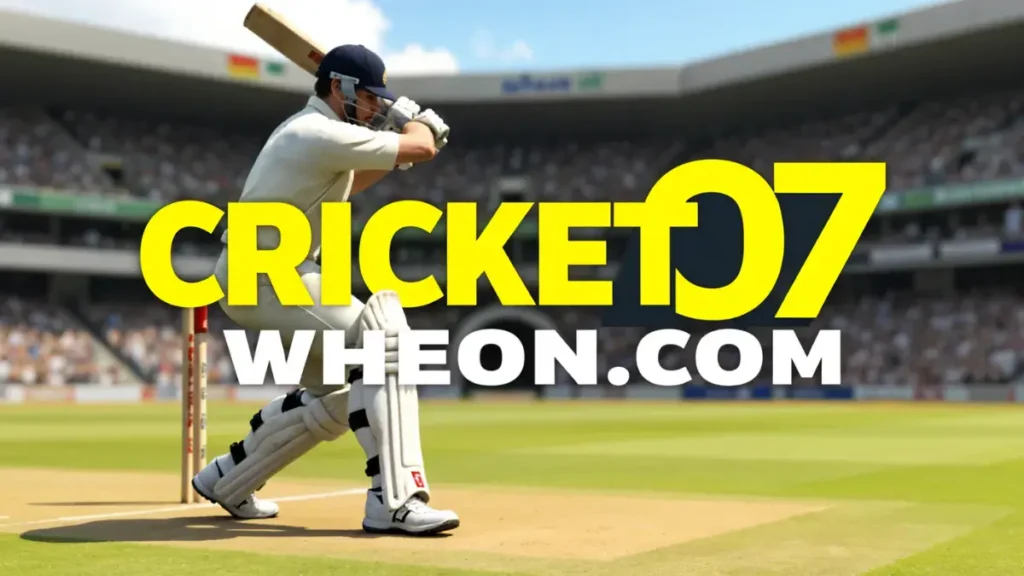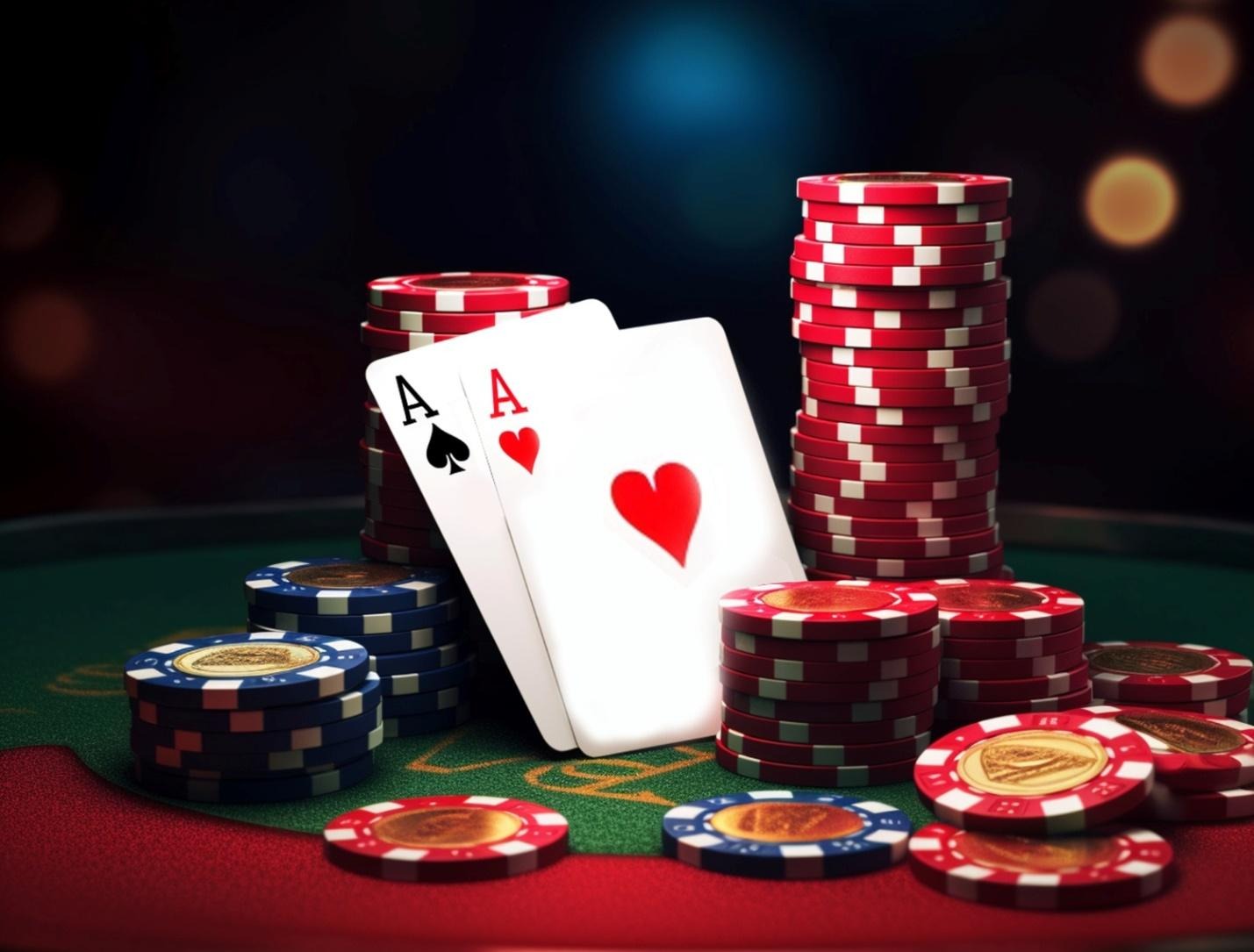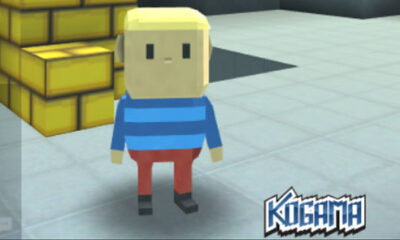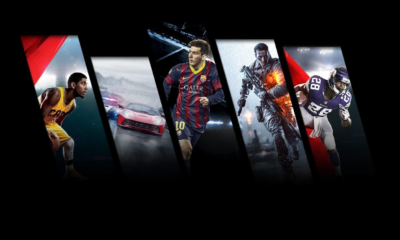Gaming
Going Balls
Master the addictive game of Going Balls with our ultimate guide. Learn controls, levels, and insider tips to elevate your gameplay. Play now!

Going Balls is a game that’s taking the internet by storm. It’s more than just a game; it’s an adventure that tests your reflexes and focus. Imagine this. You’re in control of a ball racing down a winding track. The setting is vibrant, and the pace is exhilarating. All you have to do is move left or right. Sounds simple, right? But don’t let that fool you. As you dive deeper into the game, you’ll discover obstacles and challenges that keep you on the edge of your seat.
Here’s the best part. Going Balls is an unblocked game. So you can play it anywhere. At school. At work. Even at public libraries. This game offers endless fun without any barriers. You’ll find yourself competing with friends, family, and even yourself to beat high scores. And you won’t have to worry about complicated downloads or system requirements. Just open your browser, and you’re good to go.
Now let’s talk about variety. Going Balls keeps things fresh with a wide array of levels. Each level presents new challenges. Steeper slopes. More obstacles. Tighter turns. You’ll need to use your skills and wit to make it to the end. It’s addictive. It’s exciting. And it keeps you coming back for more.
Master the Game: How to Play Going Balls Like a Pro
This simple yet addictive game has captured the attention of gamers worldwide. If you’re new to this sensation or you’re looking to up your game, you’ve come to the right place.
Step into the World of Going Balls
First thing’s first. Open the app or go to the website hosting the game. The visuals will grab your eye instantly. Bright colors, engaging graphics, and a dynamic track that seems to promise an exciting ride ahead.
The Basic Gameplay: It’s All About Speed and Reflexes

Once you hit that start button, your ball starts rolling down a zigzagging path. Now, don’t underestimate the game. The track features a lot of twists, turns, and obstacles designed to trip you up. Your mission is to get the ball to the finish line without any mishaps. Sounds fun, right? Let’s talk about the controls to make this happen.
Controls: Simplicity is Key
Forget about complex button combinations. Playing Going Balls is as straightforward as it gets. All you need to use is the arrow keys on your keyboard or simple swipes on your touchscreen. Swipe or move to the left to steer the ball left. Do the opposite to move right. It’s that simple.
Conquer the Course: Unlocking the Levels of Going Balls
Each one is a unique playground of challenges, offering new thrills and keeping your gameplay fresh. If you’ve just started your journey, or you’re striving to master the higher levels, this guide is your key to conquering each stage. So let’s roll right into it and discover the levels that make this game the addictive game it is.
The Starting Blocks: Beginner Levels
When you first launch Going Balls, you’re greeted with fairly simple courses. Don’t be fooled. These levels are designed to introduce you to the game mechanics. You’ll find ramps, basic obstacles, and power-ups that allow you to get a feel for the controls. It’s a warm-up for the more complex tracks ahead.
The Twist and Turns: Intermediate Levels
As you progress, the game starts throwing curveballs. The tracks become more complex, featuring sharper turns and moving obstacles. Now is the time to really hone your skills. Timing, reflexes, and control over your ball become crucial. You’ll need to be quick on your fingers and even quicker in your decision-making.
Jump, Slide, Repeat: Advanced Levels
Welcome to the big leagues. Advanced levels aren’t for the faint of heart. Here you’ll face steep slopes that can send you hurtling into oblivion if you’re not careful. Jumps and slides make their grand entrance, requiring precise timing and control to navigate. Your skills are put to the ultimate test here, so prepare for a challenge.
The Elusive Bonus Levels
Ah, the sweet reward! Going Balls offers bonus levels that you can unlock through high scores or in-game purchases. These levels often feature unique themes and challenges not found in the regular stages. Expect the unexpected, from space-age tracks to underwater adventures.
The Endless Mode: How Far Can You Go?
Craving more? Once you’ve conquered all the standard levels, try your hand at the Endless Mode. As the name suggests, this mode offers an infinite track, becoming progressively harder as you advance. It’s the ultimate test of your gaming skills, and a great way to compete with friends for the highest score.

Game-Changing Hacks: Top Tips and Tricks
- Master basic controls first; the key to advanced gameplay is getting the fundamentals right.
- Prioritize gem collection; these boost your score and unlock special features.
- Make small adjustments; tiny moves can help you dodge obstacles more effectively.
- Time your jumps; know when to leap to avoid falling into gaps.
- Use speed boosts carefully; they can be both a blessing and a curse.
- Deploy slow-motion power-ups strategically; best for navigating complicated obstacle arrangements.
- Practice, practice, practice; repetition is the key to mastering any level.
- Observe obstacle patterns; many levels have recurring challenges that you can anticipate.
- Try different paths; exploring various routes can lead to higher scores.
- Take on Endless Mode; it’s the perfect arena to refine skills and compete for high scores.
- Always look ahead; focusing only on your ball will make you miss upcoming challenges.
- Balance speed and precision; reckless speeding often leads to failure.
- Utilize the pause feature; it’s there for you to take a break and strategize.
- Watch and learn; videos from expert players can offer invaluable tips.
- Have fun; enjoyment is the ultimate goal and often leads to better performance.
Unlock the Magic: Unique Features That Set Going Balls Apart
- Simplistic Controls: One of the biggest draws is the easy-to-understand control system. No complex button combos, just straightforward swiping or arrow keys.
- Vivid Graphics: The bright and colorful design not only catches your eye but also keeps you engaged, making for a visually pleasing experience.
- Dynamic Levels: Forget monotony; each level in Going Balls offers something new, from challenging obstacles to varied terrains, keeping the gameplay fresh and exciting.
- Endless Mode: Once you’ve mastered the basics, you can jump into an endless track that gets increasingly complex, offering infinite replay value.
- Collectible Gems and Power-Ups: As you roll along, you’ll find gems and special items. These not only boost your score but also add layers of strategy to the game.
- Obstacle Variety: From ramps and moving platforms to tight curves and gaps, the game throws a wide array of challenges your way.
- Timing and Reflex Test: More than just a rolling ball, this game truly tests your timing and reflexes, making each successfully navigated obstacle a mini victory.
- Social Scoreboard: Challenge your friends and family and compare scores to add a competitive edge to the game.
- Accessible Anywhere: Being an unblocked game, you can play Going Balls at school, at work, or any place with internet access.
- Free to Play: Accessibility is further boosted by the game being free, allowing anyone to jump in and enjoy.
- Regular Updates: The game keeps evolving, with regular updates that add new levels, obstacles, and features to keep the gameplay exciting.
Quick Answers to Your Burning Questions
How Do I Play Going Balls?
Simply swipe left or right to control your ball. Navigate through various obstacles and collect gems to reach the finish line.
Is This Game Free to Play?
Yes, it is generally free to play. However, in-game purchases are available for power-ups and unlocking special features.
Can I Play Going Balls Offline?
Generally, this game requires an internet connection for updates and certain features. Check the game’s settings for offline availability.
How Can I Get a High Score?
Focus on collecting gems and power-ups, while avoiding obstacles. Mastering the timing of your movements and jumps will help you achieve a high score.
Is This Game Available on Multiple Platforms?
It is mainly a mobile game, but it is often hosted on various websites that make it playable on desktop computers as well.
Wrapping It Up
So there you have it. You now know how to play Going Balls like a pro. You’ve learned about the controls, the levels, and the tips and tricks. You even know the unique features that make this game a hit. It’s clear why this game has taken the world by storm. From its simple yet addictive gameplay to its vibrant graphics, it has something for everyone. Now it’s your turn. Take the plunge. Master the game.
People Also Searched For
- Slope Unblocked Games
- Moto X3m
- 1v1.lol Unblocked 66
- Fireboy And Watergirl Unblocked
- Happy Wheels Unblocked Games
- Minecraft Unblocked Games 66
- Drift Hunters Unblocked
- Tunnel Rush Unblocked
- Eggy Car Unblocked 66
- Google Baseball Unblocked
- Fall Boys Unblocked
- Bouncy Rush
- Cookie Clicker Unblocked Games
- Pixel Combat 2
- Little Alchemy 2
- Subway Surfers Unblocked
- Planet Clicker 2
- Retro Bowl Unblocked
- Big Tower Tiny Square Unblocked
- Rooftop Snipers Unblocked
- Getaway Shootout Unblocked
- Papa’s Cheeseria
- Heardle Game
- Iron Snout Unblocked
- Basketball Legends
- Flappy Bird Unblocked
- Highway Racer
- Geometry Dash Unblocked
- Crazy Shooters
- Basketball Stars Unblocked
- Rummy Wealth
- Among Us Unblocked
- 8 Ball Pool Unblocked
- Garden Tales
- Mahjong Connect
- Coin Clicker
- Tetris Unblocked
- Chess Unblocked
- Stickman Hook Unblocked
- Mario Unblocked
- Tiny Fishing Unblocked
- Bob The Robber Unblocked
- Fortnite
- io Unblocked Games
- 2048 Unblocked
- Cricmania
- Smash Karts Unblocked
- Drive Mad Unblocked
- Tallman Run
- Monkey Mart
- Snow Rider 3D Unblocked
- Unblocked Games WTF
- Unblocked Games
- Crossy Road Unblocked
- Cat Ninja Unblocked
- Slither.io Unblocked
- Penalty Shooters 2
- Worlds Hardest Game Unblocked
- Vex 3 Unblocked
- Ping Pong Unblocked
- Backflip Maniac
- Unicycle Hero Unblocked
- Rocket League Unblocked
- Game Online Gratis
- 66 Unblocked Games
- Google Tic-Tac-Toe
- hole io unblocked
- FNF Unblocked
- Cricket Legends
- Pacman 30th Anniversary
- Pacman Unblocked
- Fly or Die
- Bitlife Unblocked
- Sausage Flip Unblocked
- Drift Boss Unblocked
- Madalin Stunt Cars 2 Unblocked
- Paper io Unblocked
- Granny Unblocked
- krunker.io unblocked
- G Switch
- Temple of Boom
- Shell Shockers Unblocked
- Eaglercraft
- Pocket Emo
- Rolling Ball 3D Unblocked
- Blackjack Unblocked
- Roblox Unblocked
- Traffic Jam 3D
- Tomb Runner
- Super Smash Flash 2 Unblocked
- Unblocked Games 911
- Yummy Tales 2
- Block Champ
- Dinosaur Game Unblocked
- Moto Road Rash 3D Unblocked
- Merge Fruit
- Cat Runner
- Love Tester 3
- Sniper 3D
- Woodoku
- Drunken Boxing
- Top Speed Racing 3D
- Mini Golf Game
- FNAF Unblocked
- Basketball Random Unblocked
- Happy Snakes
- Sugar Heroes
Gaming
Wheon Cricket 07 – Complete Guide to Download, Features & Tips

Cricket games have always held a special place in the hearts of Indian gamers, and Wheon Cricket 07 continues to enjoy massive popularity even years after its original release. Inspired by the legendary EA Sports Cricket 07, this modified version brings updated teams, modern graphics, realistic gameplay, and an immersive cricketing experience that appeals to both casual players and hardcore fans.
In this detailed guide, we will explore everything you need to know about Wheon Cricket 07 — from what it is and why it’s so popular, to its features, gameplay modes, download guidance, and expert tips to improve your performance.
What Is Wheon Cricket 07?
Wheon Cricket 07 is a fan-modified version of Cricket 07, developed and distributed by the Wheon platform. It enhances the original game with updated international teams, current players, improved stadiums, realistic kits, and smoother gameplay mechanics.
Despite being based on an older engine, Wheon Cricket 07 remains highly relevant due to its low system requirements and highly customisable nature. It is especially popular among Indian and Asian cricket fans who enjoy offline cricket gaming on PC.
Why Wheon Cricket 07 Is Still Popular
Even in the era of high-end cricket games, Wheon Cricket 07 continues to thrive for several reasons:
- Runs smoothly on low-end and mid-range PCs
- Highly customisable teams, tournaments, and players
- Nostalgic gameplay with modern updates
- Easy controls and realistic match simulation
- Active modding community
The game perfectly blends simplicity with realism, making it accessible for beginners while still challenging for experienced players.
Key Features of Wheon Cricket 07
Updated Teams and Players
Wheon Cricket 07 includes modern international teams, updated player rosters, and current squad line-ups. Star players from recent years are accurately recreated with realistic stats and playing styles.
Improved Graphics and Visuals
While the core engine remains classic, Wheon Cricket 07 features:
- Enhanced pitch textures
- Improved stadium visuals
- Updated team kits and logos
- Better lighting effects
These upgrades significantly improve immersion without increasing hardware demands.
Realistic Gameplay Mechanics
The gameplay focuses on balance and realism:
- Smart AI bowling variations
- Improved batting timing and shot selection
- Realistic ball physics
- Strategic field placements
Each match feels competitive and dynamic.
Game Modes Available in Wheon Cricket 07
Exhibition Matches
Perfect for quick games, exhibition matches allow players to jump straight into action with any team and setting.
Tournaments and World Cups
Players can enjoy ICC-style tournaments, tri-series, and custom competitions. You can simulate entire cricket seasons or play match by match.
Career Mode
Career mode lets you:
- Create a custom player
- Progress from domestic cricket to international level
- Improve skills through consistent performances
It adds depth and long-term engagement to the game.
Multiplayer Mode
Wheon Cricket 07 supports local multiplayer, allowing friends to compete using the same PC and keyboard controls.
System Requirements for Wheon Cricket 07
One of the biggest advantages of Wheon Cricket 07 is its low system requirement.
Minimum Requirements
- OS: Windows 7 or above
- Processor: Intel Pentium or equivale
- RAM: 2 GB
- Graphics: Integrated graphics
- Storage: Around 2 GB free space
The game runs smoothly even on older laptops and PCs.
How to Download Wheon Cricket 07 Safely
Step-by-Step Download Guidance
- Visit a trusted Wheon-related platform or cricket gaming community
- Look for the latest version of Wheon Cricket 07
- Download the compressed setup file
- Extract the files using WinRAR or similar software
- Install the game following on-screen instructions
Important Safety Tips
- Avoid suspicious pop-up sites
- Use antivirus software
- Download only from trusted sources
- Do not install unnecessary third-party software
Always ensure the files are virus-free before installation.
How to Install Wheon Cricket 07
- Extract the downloaded zip or rar file
- Run the setup or executable file
- Choose the installation directory
- Complete installation
- Launch the game and adjust settings
Most versions do not require advanced configuration, making installation beginner-friendly.
Best Gameplay Tips for Wheon Cricket 07
Batting Tips
- Focus on timing rather than power
- Play along the ground on difficult pitches
- Use defensive shots early in the innings
- Avoid excessive lofted shots
Patience is key to building big scores.
Bowling Tips
- Mix pace, swing, and length
- Use slower balls strategically
- Change bowlers frequently
- Set attacking fields early
Smart bowling setups can completely change match outcomes.
Fielding Tips
- Anticipate shots based on batter stance
- Use manual fielding for run-outs
- Adjust field placements according to pitch conditions
Good fielding often decides close matches.
Customisation Options in Wheon Cricket 07
Wheon Cricket 07 offers excellent customisation options:
- Edit player names, stats, and appearances
- Modify team kits and logos
- Add custom tournaments
- Install patches and mods
These features allow players to personalise the game to match current cricket seasons.
Common Issues and Fixes
Game Not Launching
- Run as administrator
- Check compatibility mode
- Update graphics drivers
Lag or Stuttering
- Lower graphics settings
- Close background applications
- Adjust resolution
Controller Not Working
- Use keyboard mapping software
- Configure controls manually
Most issues can be fixed with simple adjustments.
Is Wheon Cricket 07 Worth Playing in 2026?
Absolutely. Wheon Cricket 07 remains one of the best offline cricket games for PC users who prefer realism, simplicity, and control. Its strong community support, regular updates, and mod availability keep it fresh even today.
For players who enjoy tactical cricket rather than arcade-style gameplay, Wheon Gaming offers unmatched satisfaction.
Final Verdict
Wheon Cricket 07 is more than just a modified game — it is a celebration of cricket gaming nostalgia blended with modern updates. Whether you are reliving childhood memories or discovering classic cricket gaming for the first time, this game delivers consistent entertainment.
With its low system requirements, realistic gameplay, and endless customisation options, Wheon Cricket 07 continues to dominate the offline cricket gaming scene. If you are a cricket fan looking for a reliable, enjoyable, and immersive PC game, Wheon Cricket 07 is absolutely worth downloading and playing.
Gaming
Aztec Gems Slot Game on CUCU777: Classic Design with Modern Slot Appeal

The Aztec Gems slot game on CUCU777 offers a classic slot experience combined with a timeless Aztec-themed design. Known for its simplicity and clean visuals, Aztec Gems appeals to players who enjoy straightforward gameplay without complicated mechanics.
On the CUCU777 platform, Aztec Gems is featured as a slot game that focuses on clarity, balance, and smooth performance across devices.
What Is Aztec Gems on CUCU777?
Aztec Gems is a classic-style slot game inspired by ancient Aztec symbols such as gemstones, statues, and gold artifacts. The game follows a traditional reel format, making it easy to understand for new and casual players.
Key Features of Aztec Gems CUCU777
- Classic 5-reel slot structure
- Aztec-inspired symbols and visuals
- Simple and clean gameplay mechanics
- Smooth animations and fast loading
These features make Aztec Gems a comfortable slot game choice on CUCU777.
Gameplay Style and Slot Experience
The Aztec Gems slot game on CUCU777 focuses on simplicity. Without overly complex bonus rounds, players can enjoy a relaxed gaming experience that emphasizes visual clarity and steady gameplay flow.
Why Simple Slot Games Still Matter
Many players prefer classic slot designs because they are easy to follow and less overwhelming. Aztec Gems provides a refreshing alternative to feature-heavy modern slots.
Visual Design and Theme
Aztec Gems uses warm colors, gemstone icons, and ancient-themed artwork to create a calm yet engaging atmosphere. The visual style is designed to feel timeless rather than flashy.
On CUCU777, Aztec Gems runs smoothly on both desktop and mobile devices, ensuring a consistent experience for users.
Tips to Enjoy Aztec Gems on CUCU777
Although slot games are based on chance, a few habits can improve overall enjoyment.
1. Appreciate the Classic Layout
Understanding the reel structure helps players follow the game flow comfortably.
2. Play for Relaxation
Aztec Gems is ideal for players who want a slower-paced and stress-free slot experience.
3. Explore Other Classic Slots on CUCU777
CUCU777 offers a mix of classic and modern slot games, allowing players to switch styles easily.
Why Aztec Gems Remains Popular on CUCU777
The enduring appeal of Aztec Gems comes from its simplicity and timeless design. It does not rely on heavy features, making it accessible to a wide audience.
By including Aztec Gems in its slot collection, CUCU777 continues to cater to players who appreciate classic slot gameplay alongside modern titles.
Conclusion
The Aztec Gems slot game on CUCU777 delivers a classic and enjoyable slot experience through simple mechanics, clean visuals, and a timeless theme. As a traditional-style slot game, it offers relaxed gameplay moments without unnecessary complexity.
With CUCU777 as the platform, players can explore Aztec Gems comfortably and enjoy a classic slot game that remains relevant in modern online gaming.
Gaming
The Hidden Cost of Overplaying a Winning Slot

It’s an incredible feeling when you win. The excitement of landing a few lucky spins on a slot gacor machine is why most online gamblers even give online slots a shot in the first place. Sites like Salju88 give gamblers an almost endless chance at having these experiences, especially thanks to innovative methods of making a deposit like using a slot pulsa. But there’s a subtle pitfall hidden amongst all of these opportunities that people tend to overlook. This pitfall is overplaying after a winning session.
It is essential to have an understanding of the hidden cost of overplaying a winning slot. It is not known to many people how the euphoria of winning a game may affect one’s judgment, thereby losing money that had already been won.
The Emotional High of a Winning Session
The feeling of winning is also accompanied by a major psychological high. Dopamine rushes to one’s brain and triggers feelings of optimism and dominance over others. This is especially true during a slot gacor session on Salju88, where multiple wins in succession can make players believe they’ve “figured out” the game.
The danger is that this emotional high encourages longer play. The players believe that either the trend is likely to continue or that it is best to place a high amount to win maximum. In reality, there is no point to rely on trends because of the randomity associated with slots.
A player with experience can fall prey to this trick. Awareness of the “high” is the start towards maintaining control.
How Overplaying Shifts Risk
When a winning session continues beyond a planned limit, risk grows disproportionately. Many players start increasing their bet size, thinking that they are “protected” by previous wins or even garansi kekalahan offers.
This can be a mistake. Though a feature like garansi kekalahan could be a safety net, a promotion tool, or both, it does not prevent a potential loss on Free Spins. Many Free Spins casinos can contribute towards a player experiencing a net loss, especially if they play excessively while wagering hefty sums of money.
The key takeaway: previous wins do not reduce risk—they only provide a cushion that can vanish if caution is ignored.
The Psychological Trap of “Hot Slots”
The concept of a slot gacor is compelling. Players in particular just love to think that when a machine is paying well, it will keep paying well in the future.” This is because the machine has been exhibiting streaks or selective memory: “Wins are remembered with clarity; losses fade away quickly.
Overplaying can often be a result of trying to capitalize on the perceived ‘hot streak.’ Players spend more time on a game, ignoring signs that the session is cooling down. On Salju88, understanding that no slot’s performance is truly predictable is crucial for responsible play.
Financial Consequences of Overplaying
Beyond emotional effects, overplaying a winning slot can have real financial consequences. Slot pulsa deposits can make playing very efficient, but the problem is that playing with no limit can easily deplete the funds that are supposed to be made from playing. It is true that one may be tempted to continue playing, but the fact is that every spin in slot machines has an equal chance.
This is where Salju88’s tools, such as session tracking and responsible play reminders, can help. By having a winning goal and also a stop loss point, it is ensured that there is no loss and there is continued enjoyment.
Mental Fatigue and Decision-Making
Extended winning sessions are mentally exhausting. Concentration deteriorates, a lack of patience develops, and the ability to make decisions gets compromised. There could be a tendency towards rash decision-making in the form of raising a bet without proper cause, game switching, or not recognizing risks.
Slot machines are recreational activities, rather than tests of stamina. To avoid a stressful experience when playing slot games on Salju88, players must be aware of how to pace themselves.
How Overplaying Interferes With Strategy
Even casual players unknowingly have strategies. Such actions may be accomplished by adjusting betting levels, engaging in select slot gacor games during designated times, or even utilizing slot pulsa functionality. Overplaying prevents these strategies by bringing about impulsive and emotion-based choices.
For example, rather than sticking to an overall betting plan, a gambler could walk away from it in order to take advantage of a strong run of luck in terms of winning. This could make what initially presented strong elements of odds and control become unpredictable and disorganized.
Preventing the Hidden Cost
The best defense against overplaying is proactive planning. Here are a few strategies that humans have developed:
- Set Clear Limits: Before the beginning of a session, determine how many you are willing to win.
- Record Wins and Losses: This will help in viewing what worked and what did not.
- Identify Emotional States: Stop if feeling too much excitement or frustration.
- Use Features Wisely: Understand garansi kekalahan rules but don’t rely on them as a safety net.
- Take Breaks: Step away between winning streaks to maintain clarity.
These habits help preserve control and maximize enjoyment. Salju88 encourages responsible play, and using these strategies ensures that winning sessions remain positive experiences.
Final Thoughts
Winning is fun. A slot gacor session on Salju88, especially with fast slot pulsa deposits, can feel electrifying. But overplaying after a win has hidden costs: financial, emotional, and mental. Advances made can easily evaporate if discipline is disregarded, with some “features” such as garansi kekalahan providing no promise of success.
Clever players know both when to celebrate, pause, and stop. To recognize wins and think of them as contributing to rounded play rather than seeing them as incentive to play every dollar maxed. The certain cost of rewards keeps Slots interactive and safe.
For a mindful, enjoyable slot experience, visit https://tokosalju88.com/ and learn how to play smart while chasing those slot gacor thrills responsibly.
-

 Finance3 years ago
Finance3 years agoProfitable Intraday Trading Advice For Novices
-

 Gaming3 years ago
Gaming3 years agoSubway Surfers Unblocked | Subway Surfers Unblocked 66
-

 Internet3 years ago
Internet3 years agoWelcome to banghechoigame.vn – Your One-Stop Destination for Online Gaming Fun!
-

 Gaming3 years ago
Gaming3 years agoMinecraft Unblocked Games 66 | Unblocked Games Minecraft
-

 Gaming2 years ago
Gaming2 years agoPixel Speedrun Unblocked Games 66
-

 Gaming3 years ago
Gaming3 years agoGoogle Baseball Unblocked | Google Doodle Baseball Unblocked 66
-

 Internet2 years ago
Internet2 years agoPremium Games Unblocked: Unleash Your Gaming Potential
-

 Gaming3 years ago
Gaming3 years agoTunnel Rush Unblocked | Tunnel Rush Unblocked 66

